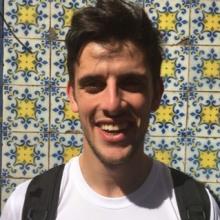Oral
Does sports participation attenuate the relationship between screen time and quality of life of children?
Background: Excessive screen time (ST) is inversely related to mental wellbeing in children and adolescents. At the same time, participating in sporting activities is positive associated with wellbeing. However, it remains unclear whether different types of screen engagement have equivalent associations with wellbeing and what the role of sports participation is in attenuating these associations.
Purpose: This study examined longitudinal associations between active and passive screen use, sports participation, and health-related quality of life (QoL) in Australian children and explored the effects of sports participation.
Methods: Utilising data from the Longitudinal Study of Australian Children, this study followed children aged 6-7 years in 2010 (n=4,242) to age 14-15 years in 2018 (n=3127). QoL was assessed using the Pediatric Quality of Life Inventory, with active and passive ST was assessed through time spent gaming and watching television, respectively. Sports participation was measured using two items assessing frequency of participation in team and individual sports.
Results: Multilevel modelling indicated that high active ST (>2-hrs/d), compared to low (<1-hr/d), was inversely associated with QoL across genders, with a greater impact on girls (girls: β -5.19, 95% CI -6.76 to -3.61; boys: β -2.93, -3.93 to -1.93). High passive ST was inversely associated with QoL in girls only (β -1.66, -2.56 to -0.73). Any participation in sport was positively associated with QoL, with team sport participation having a greater impact than individual sport participation. Participating in team sport attenuated the association between active ST and QoL regardless of gender, with mixed evidence for the role of individual sports.
Conclusions: Engaging in high active ST might negatively affect children’s QoL, particularly in girls. However, participation in team sports may attenuate these effects.
Practical Implications: Encouraging children to limit their ST, especially active ST, and regularly participating in team sports may enhance their wellbeing.
Funding: None.
Submitting Author
Asaduzzaman Khan
Population Group
Children
Study Type
Epidemiology
Setting
Not Applicable



